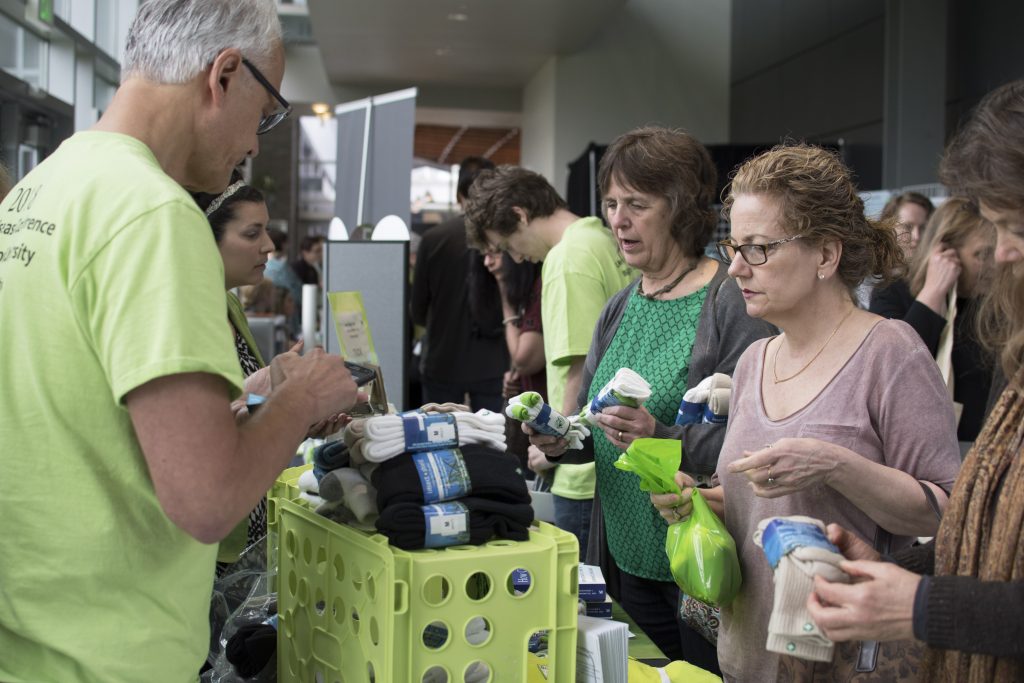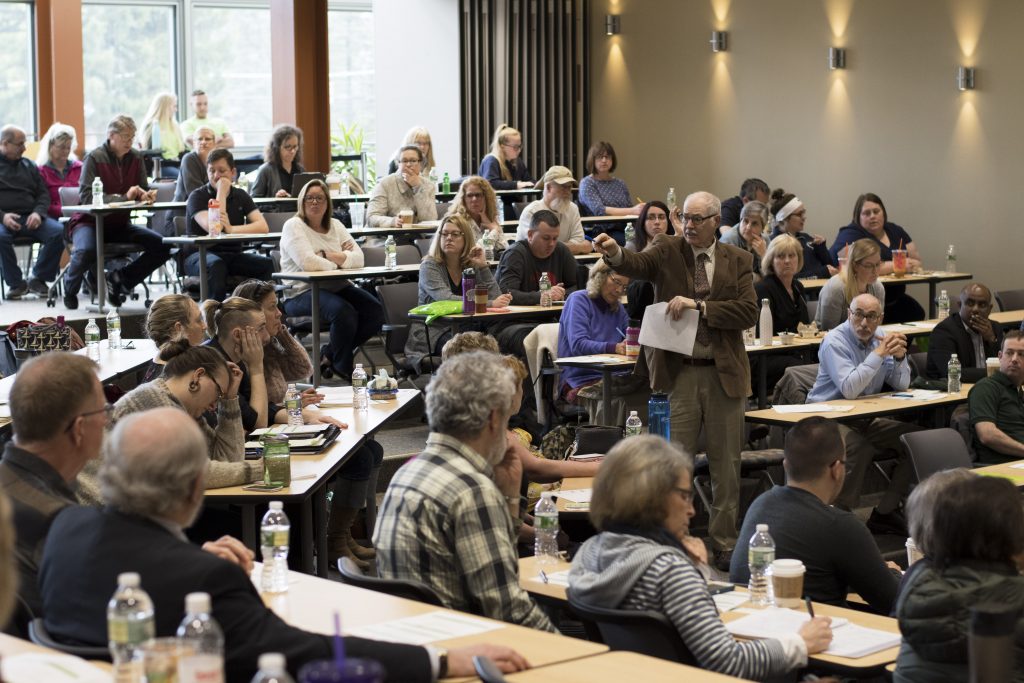
On Saturday, Binghamton University’s fifth-annual Lyme Disease Conference was held in the Innovative Technologies Complex’s Center of Excellence Building.
The event, hosted by Binghamton University’s Tick-borne Disease Research Center and Southern Tier LYME Support, Inc., featured information on spreading awareness and treatment options. According to Ralph Garruto, a speaker at the conference, director of BU Biospecimen Archive Facility and a professor of anthropology at BU, there has been an increase in speakers since the first event.
“This year we have many more speakers than last year, so the event itself, in terms of the number of speakers from around the region and the state, has increased,” Garruto said. “Awareness about Lyme [disease] and tick-borne illnesses is so important, and thus the conference is set up specifically for the public as well as medical providers who need the latest information on Lyme disease in the region.”
According to Garruto, Lyme disease is a major issue facing the local region, and has become more prevalent in recent years.
“The reason for this conference and an organized research center here at the University on tick-borne diseases is because the problem has grown enormously,” Garruto said. “The prevalence has grown by a factor of five, six, 700 percent higher than it was about 15 years ago.”
The conference followed an event held on Thursday when 400 flags were planted in front of the Broome County Courthouse, representing the number of confirmed cases of Lyme disease in Broome County since 2017. Garruto said Binghamton’s northeastern location sees an increased number of cases as opposed to other regions of the country.
“New York state has a large number of cases of Lyme disease, as does the entire northeast and upper midwest [of the United States],” Garruto said. “These are the main regions in the country that have a large burden of Lyme disease patients.”
Robert Dempsey, a volunteer coordinator for Southern Tier LYME Support, Inc., said he became involved in the nonprofit organization after being diagnosed with Lyme disease a year and a half ago.
“I had been sick for several years and didn’t know what was wrong — after finding a Lyme-literate doctor and starting an antibiotic protocol, I am starting to feel better,” Dempsey said. “I got involved with this organization because I felt it was important. Once I found a doctor that understood Lyme, I got answers.”
Other speakers included Bettina Wagner, a professor of veterinary medicine at Cornell University’s College of Veterinary Medicine, who spoke about Lyme disease, treatment and vaccination in pets. Wagner said the clinical signs of Lyme disease in dogs include mild and transient fever, intermittent pain in muscle joints and bones and joint swelling with muscle tenderness.
“If dogs get infected, what they show typically is lameness, and they develop arthritis after two to five months,” Wagner said.
Robert Giguere, director of sales for IGeneX Inc., a specialty lab focused on tick-borne disease diagnosis, also spoke at the event. Giguere presented on Lyme disease and co-infection testing in clinical medicine and testing techniques for tick-borne pathogens.
Allstate Insurance was a sponsor for the event and donated $5,000 to Southern Tier LYME Support, Inc. Other sponsors included CoreLife Eatery, GHS Federal Credit Union and Ticknology, a Lyme disease awareness, prevention and innovation company.
Deanna Hubal, a brand ambassador for CoreLife Eatery, spoke on behalf of the restaurant’s involvement in the event.
“CoreLife became involved because of clean eating and because a lot of our foods deal with inflammation,” Hubal said. “We’ve been here every year that they’ve been doing this.”
Eliza Whitaker, a senior majoring in biology, volunteered for Southern Tier LYME Support, Inc. at the conference. Whitaker said raising awareness about the disease hits close to home for her.
“I, personally, have Lyme disease, so it’s really great for me to reach out and help other people that are suffering and to raise more awareness,” Whitaker said. “The whole point of the conference is to provide education for the community and to offer new information on research that’s being found.”



